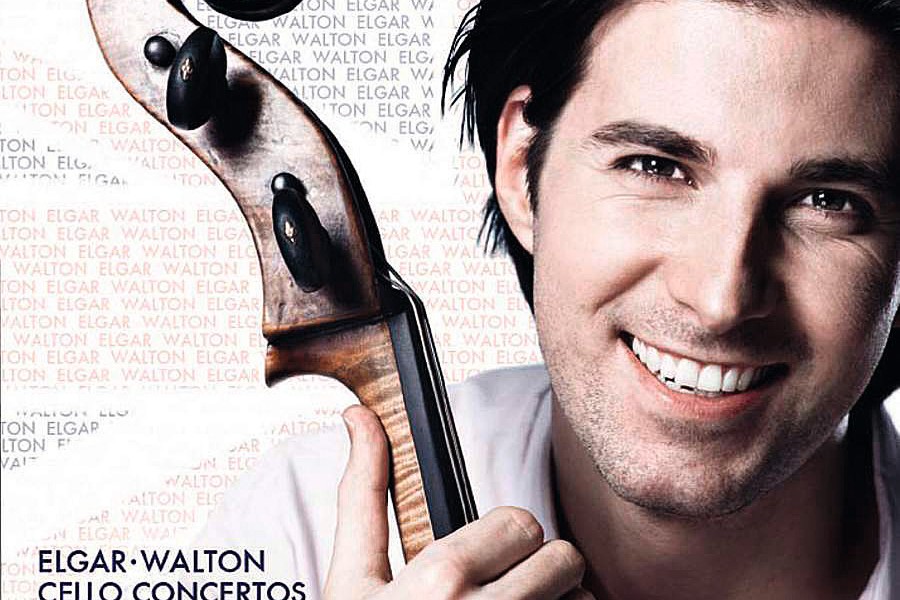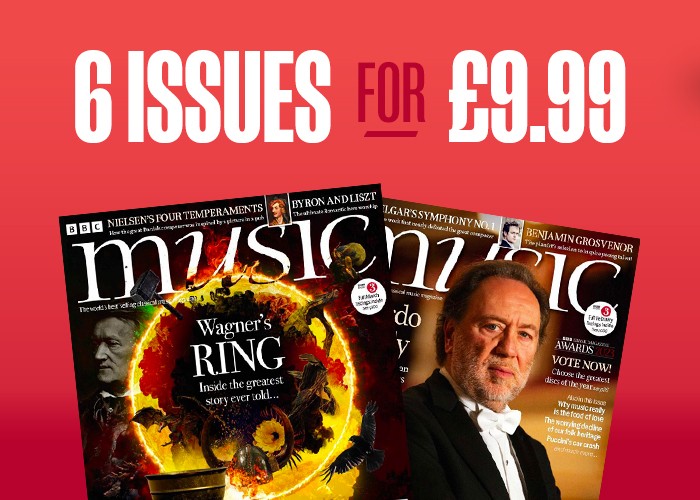Walton's Cello Concerto: a guide to Walton's cello masterpiece and its best recordings
Jo Talbot introduces one of the English composer’s most beguiling yet underestimated scores, and finds the recordings which do it justice

You know I failed my composition exam at Oxford University,’ laughed William Walton when he appeared on Desert Island Discs in 1982. But Walton had the last laugh, penning one of the most glorious cello concertos of the 20th century.
Why and when did Walton compose his cello concerto?
Walton had already composed a Violin Concerto for Jascha Heifetz (one of the greatest violinists ever) in 1939, and his friend the Russian cellist Gregor Piatigorsky was not about to be left out, requesting that he write him a concerto too. Walton famously replied, ‘I am a professional composer. I write anything for anybody if they pay me. Naturally, I write much better if I am paid in American dollars.’
According to the memoirs of Walton’s wife Susana, he was delighted a player of Piatigorsky’s calibre had asked for a concerto and sent off the score in 1956 somewhat apprehensively. However, the cellist was thrilled to receive such a substantial work. In a letter to Piatigorsky, Walton admitted he regarded it as his finest concerto, ‘but don’t tell Jascha!’
Such was his deference towards Piatigorsky that later in the letter Walton even suggested that ‘if anything in the orchestration – that vibraphone, for instance – should irk you, just cut it out, because it’s not absolutely essential, though I should miss it.’
Happily, Piatigorsky altered nothing, as this is a magical piece of orchestral colour.
When was the first performance of Walton's Cello Concerto?
The first performance, scheduled for 7 December 1956 with conductor Charles Munch and the Boston Symphony, was postponed – Piatigorsky was suffering from exhaustion – and took place instead at the end of January 1957.
Its reception was mixed, with a critic from the Boston Globe describing it as ‘more a rhapsody than a concerto’. While acknowledging the ‘fine warm melodiousness’ of the piece, the reviewer disparagingly condemned Walton’s harmony as being too consonant, writing that ‘what dissonance there is would not alarm an elderly aunt’.
Harold Rutland, writing about the world premiere in the Musical Times, was far more positive, deeming the score to be ‘a worthy companion to the composer’s earlier two concerti for viola and violin’. The London premiere took place in February that year. Once again, the critics failed to agree on the merits of the piece – the Manchester Guardian regarded it is as a modern masterpiece, but the Daily Mail complained that it was ‘too quiet with too little movement’.
Despite these early misgivings, there have been numerous recordings of this work. It is, though, a rare visitor to the concert hall, which is surprising given the work’s direct and mesmerising nature. Part of the reason may lie in the challenging orchestral part, which demands more rehearsal time than is usually allocated for a concerto. Equally, the initial reception, by stressing Walton’s purportedly conservative harmonic language, suggested that the composer’s style was old-fashioned at a time when serialism was de rigueur.
A look at the music of Walton's Cello Concerto
But this evaluation disregards Walton’s originality. Like Sibelius, Walton evolved a highly individual musical language that is defined by a restless, searching tonality. Even the magical opening theme is cast with augmented intervals that defy conventional tonal categorisation. The keys are fleeting and this unstable tonality is part of the yearning quality that offers a melancholic hue to the first movement.
Walton’s style is tightly worked with a contrapuntal fluency that recalls Hindemith, a perfumed orchestral palette that is Ravelian in its allure, with the melodic weave recalling Prokofiev. The composer’s brilliant ear for orchestral balance ensures the cello is never overwhelmed, but that we are constantly caressed by delicate timbres.
Walton exerts a tight grip on the structure and the thematic unity of his Concerto. A bewitching melody incants wistfully over a pulsating vibraphone and harp in the opening, and this glorious wide-ranging melody forms the basis of the movement. A rhythmically rapid – almost spluttering – figure begins the fast second movement, but it quickly yields to a lyrical high melody that oscillates with the rhythmic figure, and high harmonic flurries which, along with the pizzicato triple-stops, add a Mediterranean flavour.
More like this
In the finale – a Theme and Variations – Walton explores the principle of pitching the soloist against the orchestra, with two variations allotted to the orchestra and two likewise to the soloist that are unaccompanied. The first of these, marked Risoluto, opens with abrasive minor seconds and is rhythmically punchy.
In contrast, the second solo variation is marked Rapsodicamente and cascades of arpeggio-like figures lean into a lyrical melody written in two parts. A series of trills usher in the orchestra, with the mystical opening theme of the work returning in a haunting guise – a device also used in Walton’s Viola Concerto and Prokofiev’s First Violin Concerto.
All in all, this unassuming concerto marries an elegant and compelling lyricism with a taut and passionate rhythmic invention, cast in searching tonality and bathed in glimmering orchestral timbres. It’s a simply intoxicating mix.
The best recordings of Walton's Cello Concerto
Daniel Müller-Schott (cello)
Oslo Philharmonic Orchestra/André Previn
Orfeo C 621061A
During the 20th century, the nature of virtuosity changed, eschewing superficial display in favour of more timbral effects. Part of this is an elevation of expressive colour, something that Walton’s Cello Concerto really demands in applying a vast range of nuance within a phrase.
This is effected by a wide palette of vibrato coupled with a supreme control of the arm weight and bow speeds. Naturally, Piatigorsky was renowned for his expressive style, but Walton was less convinced initially about his tempos in the London premiere with Malcolm Sargent. He wrote to Piatigorsky, ‘Of course, I don’t expect you to adhere rigidly to my tempi, but the discrepancy between your timings and mine are a little too much.’
Walton wanted a robust and strong rhythmic definition, and these comments are illuminating regarding performance. His own recording with Pierre Fournier and the Royal Philharmonic Orchestra in 1959 goes at a very brisk pace, at the expense sometimes of clarity.
Daniel Müller-Schott, in his 2006 recording with conductor André Previn, achieves exactly this forward-propelling energy, but equally conjures a quite magical sense of expression, with the gloriously honed tonal palette generated from this necessarily wide range of vibrato and bow weight. A simple phrase weaves from strong to a delicate whisper in a fraction of a second.
Müller-Schott’s delivery of the tricky rhythmic material in the second movement is alert and precise with sprung energy, and his ability to fuse this with fast-changing, more lyrical material is quite fantastic. He handles the tempo fluctuations with an assured mastery that are absolutely natural within the musical invention.
The solo variations in the last movement show a multi-faceted characterisation, from a bold depiction of the Risoluto with fervent double stops to the more reflective delivery of the Rapsodicamente. Here, Müller-Schott’s manipulation of rubato drives the momentum forward while his placing of the high notes at the return of the opening theme is exquisite.
This is André Previn’s second recording of the work (his first was made with Yo-Yo Ma in 1985) and he proves the perfect partner, completely under the skin of this work, securing great warmth and exquisite orchestral timbres from the Oslo Philharmonic, whose superb playing makes this a glorious rendition.
Paul Tortelier (cello)
Warner Classics 573 3712
A composer himself, Tortelier proves acutely aware of the structural and motivic construction of this concerto, bringing great clarity to the interpretation. He follows Walton’s performance style, taking the opening at a relatively swift speed, Paavo Berglund and the Bournemouth Symphony adding expressive and incisive partnership.
The 1973 recording (remastered) has a bloom, unlike the early Piatigorsky versions. Tortelier really excels in the fast passages where the French school of bowing adds brilliance with a tangible energy.
Steven Isserlis
(Hyperion CDA 68077)
Isserlis is renowned for his poetic playing, and in this 2016 interpretation his ear for colour and tonal variety blossoms. The opening tempo moves the musical narrative forward while allowing for expressive nuance. Isserlis brings flawless rhythmic precision and energy to the fast second movement, but savours the flurries of harmonics and lyrical invention.
The solo variations are vividly realised, and are both fiery and reflective. Conductor Paavo Järvi brings much detail and colour to the Philharmonia’s orchestral partnership, though the recording sounds a little constricted.
Jamie Walton
An ambient sound complements a warm and eloquent rendition from Jamie Walton, with a lovely ear for orchestral colour from conductor Alexander Briger and, again, the Philharmonia. By turns, Walton juxtaposes a cool beauty of tone with more impassioned playing in this 2010 recording.
In the Rapsodicamente, he brings the improvisatory element to the fore with great fluidity and lyricism. He hauntingly recalls the wistful return of the opening melody but elects to perform the 1975 revision, which largely removes the cello until the final nine bars with the orchestra taking the melodic line. (Signum SIGCD 220)
We named Walton one of the greatest English composers of all time




